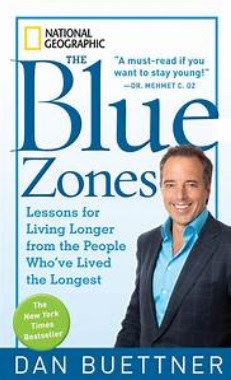I read this book many years ago. I have revisited my notes now. Consider this to be a summary of what I gathered from the book.
The author opens the with a meeting with Sakoya Ogata of Okinawa in Japan. This is a place that is known to have the highest concentration of people who have lived the longest.
The book’s title “Blue Zones” was adopted from demographers’ reference to the areas with people who have lived the longest as they were carrying out the mapping process. The original title on the National Geographic was “Secrets of Long Life.”
The author embarks on understanding the lifestyle of the people of Okinawa to get the secret behind their long lives. With a team of 20 experts in various fields, they worked around the clock to uncover stories and publish them on the web. One group worked during the day collecting stories and another worked at night translating the stories and publishing them on the web every night before midnight.
On the second interview, the author discovered that Ushi spends her day with her friends and grandchildren. Her secret to longevity was taking a dinner made up mostly of vegetables and drinking a cup of mugwort sake before going to bed.
This book is basically about seeking advice from people who have lived a healthy and long live on the blue zones.
Scientific findings have shown us that only 25% of how long people live is determined by their genes. The other 75% is actually a product of lifestyles as well as the choices we make on a daily basis.
Longevity hotspots
- Greek Island in Ikaria;
- Sardinia in Italy;
- Loma Linda in California;
- Okinawa in Japan;
- Nicoya Penninsula in Costa Rica;
The Truth about living longer
Chapter 1 starts with a story about a Spanish explorer who was searching for a fountain of Youth in the Northeast of Florida. This was considered to be a magic source of long life.
The author reminds us that aging is a system that has only an accelerator pedal. Experts have not conformed whether there is a brake. He further explains that most of us have a lot more control on how long we can live than we ever imagine. This is why we need to discover and practice longevity and health best practices for us to live longer.
This book is an outcome of a thorough research on people who have lived the longest, It researches on what these people eat, their socialization and how much physical exercise they engage in among many other factors.
Facts about aging
The science of longevity has been explored for hundreds of years. Many great scholars have conducted studies on this subject matter.
Aging is defined as failure to maintain internal balance and control. The skin is what people observe to determine whether a person is growing old or not. Gerontologists define aging as increased risk of dying even in the absence of diseases.
The first tip the author gives us on living longer is to ensure we have healthy teeth because they allow us to eat a variety of healthy foods which make up a balanced diet. This can be achieved by regularly visiting a dentist and brushing our teeth to make sure we have a bright smile.
Average American Lifespan
The average lifespan for an American is 70 or 80 years. The chances of living up to 100 years are less than 1%. This chance depends on the current age.
If a person is already 90 years old, he or she has a chance of living to 100 years as compared to a child who has been born.
According to Tom Perls, living to 100 is genetic and observing correct health behaviors. We need cleaner water supplies and more years of education in order to live longer. To become older, you need to be healthier currently. This really counts on how old you can become.
Is there a pill that can extend life?
Currently, there is no pill than can make a man live longer. Despite that people are crazy consuming antioxidants and human growth hormones but all in vain.
Look out for Part 2 of this series in the next article.


